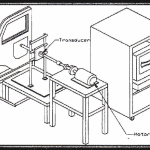
Here is a common situation that is considered when reliability testing is being planned. Let’s use letters to designate depth in a product component structure. The top level product is level “A” and a component in top sub assembly is “B”. A sub assembly, of a sub assembly, of a sub assembly, is at level “D”. So is it more efficient to test the component at level “E” or at level “B”?
Question: Is it more efficient to test the component at level “E” or at level “B” to demonstrate it’s individual goal? [Read more…]











